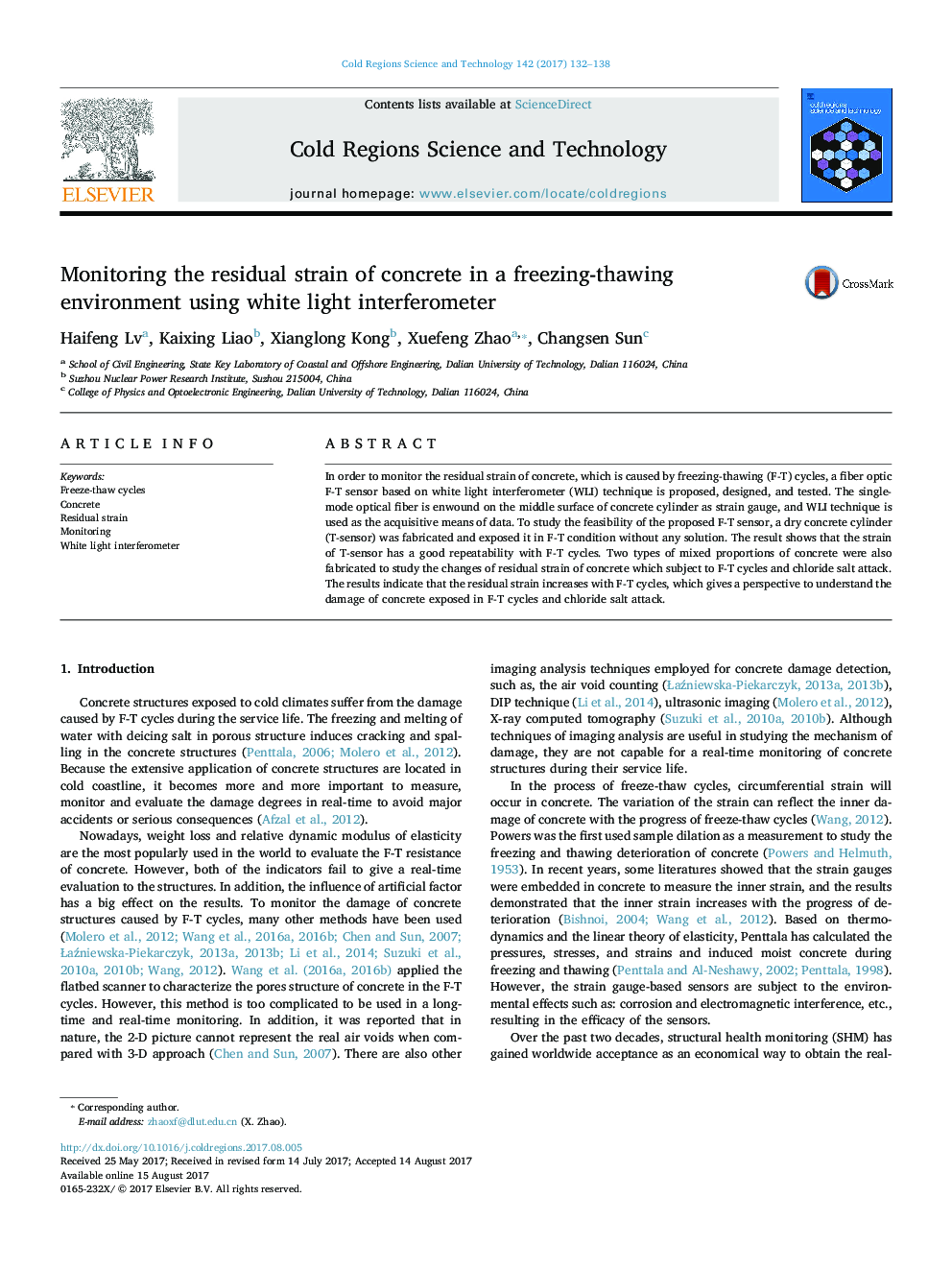| Article ID | Journal | Published Year | Pages | File Type |
|---|---|---|---|---|
| 5779345 | Cold Regions Science and Technology | 2017 | 7 Pages |
â¢A new method which used to monitor the residual strain of concrete in F-T environment was designed and tested.â¢The residual strain of concrete cylinder was monitored by the WLI.â¢The results of the test indicate the feasibility of this method.
In order to monitor the residual strain of concrete, which is caused by freezing-thawing (F-T) cycles, a fiber optic F-T sensor based on white light interferometer (WLI) technique is proposed, designed, and tested. The single-mode optical fiber is enwound on the middle surface of concrete cylinder as strain gauge, and WLI technique is used as the acquisitive means of data. To study the feasibility of the proposed F-T sensor, a dry concrete cylinder (T-sensor) was fabricated and exposed it in F-T condition without any solution. The result shows that the strain of T-sensor has a good repeatability with F-T cycles. Two types of mixed proportions of concrete were also fabricated to study the changes of residual strain of concrete which subject to F-T cycles and chloride salt attack. The results indicate that the residual strain increases with F-T cycles, which gives a perspective to understand the damage of concrete exposed in F-T cycles and chloride salt attack.
